EXCALIBUR. Immortal legend explained
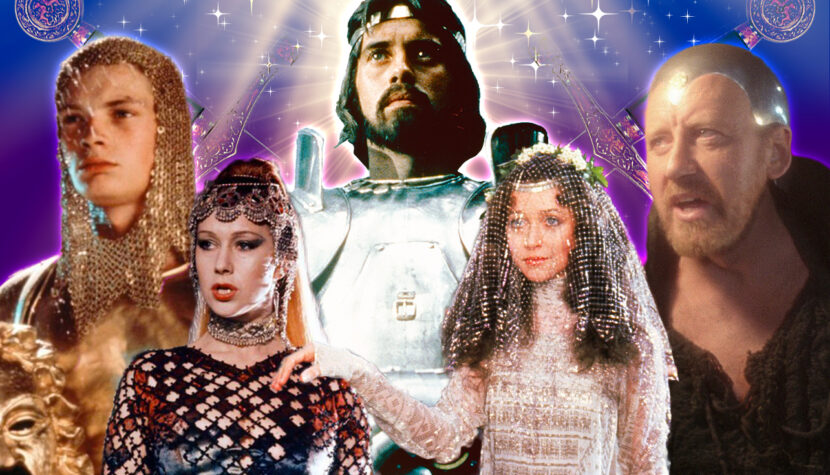
…and at the same time, it’s one of the most attractive and rich narratives, alongside the tales of the noble outlaw Robin Hood of Sherwood. It’s a concept steeped in magic, mythology, Celtic elements, and medieval heroes.
The Legend
It’s well-known that both legends were spawned by the bards of the fertile realm of Albion, the homeland of Druidic practices, pagan rituals, crusades, mighty knights, and no less great rulers. While the noble Hood, whose name ironically reflects the British aloofness, is rooted in medieval realities with only a sprinkling of magic and other fantasy elements, King Arthur and his realm exude the spirit of mystical enchantment, held within the eroded and loose framework of history.
Myths are grand and timeless, and this is not just about their numerous versions, stacks of rich tales, with Le Morte d’Arthur by Mallory at the forefront. It’s primarily one of the most vibrant, richest, and narratively intriguing legends from the mythological legacy. Let’s not beat around the bush – compared to the cold, orthodox, polytheistic Greek babble (although their bestiary was extraordinary) or even our own basilisks and dragons, Arthur’s adventures shine with pure gold at the zenith of glory. That’s why we’ll talk about Arthur, about the Sword and the Grail, not about Robin, whose opus magnum we’ve already encountered in Reynolds’ excellent film. Nor will we discuss the Iliad, although I had substantial hopes tied to Troy, which ultimately fizzled out.
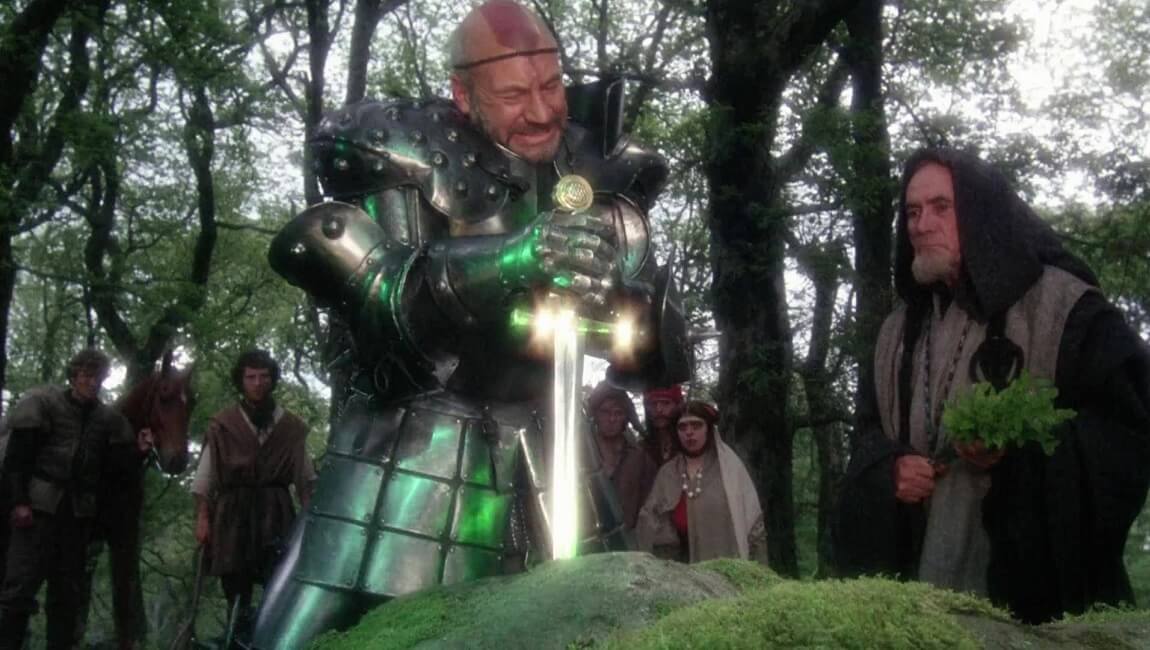
King Arthur – a mythical ruler, a bearer of hope and peace to a weary kingdom. With Excalibur in his hand, he raises a powerful realm from the ruins of lands consumed by war. Then Camelot and the Round Table, as he assumes the throne. But when sinful love shatters Arthur’s power, and the Son of Darkness, the grim Mordred, knocks at Camelot’s gates, driven by the lust for power, the Knights embark on a quest to find the Holy Grail, an artifact with the power to restore the kingdom’s former glory. The inevitable battle between Good and Evil, marked by bloodshed and devastation, will close this chapter of history…
As I mentioned, there were as many versions and interpretations of the myth as there were scribes delving into the legendary history of England, and there were quite a few of them. Suffice it to say that the names of individual knights were modified to absurdity, and the Holy Grail was found by both King Arthur and Lancelot of the Lake, Galahad, and Percival. Depending on the creators’ imagination. Nevertheless, that’s the nature of creating a legend and its continuous growth with new, bolder, and fantastical elements. When John Boorman took on King Arthur, he used Mallory’s work as the basis for the script, a “pure magic” version with Sir Percival as the discoverer of the Grail. Hats off to him for that, although it’s also worth mentioning other film creators who sometimes made the legend tiresome, and sometimes gave it a new face. Notable films include Monty Python and the Holy Grail, a unique blend of absurdity, black humor, and Python-esque atmosphere in an Arthurian setting. The satirical and mocking treatment of the native ethos turns it into something akin to a brilliant heroic-comic painting. I’m also aware of Bresson’s Lancelot du Lac, as well as Jerry Bruckheimer’s endeavor King Arthur, which approached the legend with a historical dramatic perspective. The TV series Merlin with Neill as the titular character is rather mediocre, saved by decent acting and a few “special” effects, with a frivolous plot centered around the magician, although not very successful. Among the less commendable titles, First Knight must be mentioned. For what Gere does in this mess as Lancelot, the secret police for combating idiocy in films should swoop in and give him a life sentence. As I’ve come to prove, the Arthurian myth in cinema is an extremely attractive and captivating topic. However, from the multitude of proposals, one stands out – outstanding, brilliant! The most noble and fruitful offspring of John Boorman… drumroll, please… Excalibur.
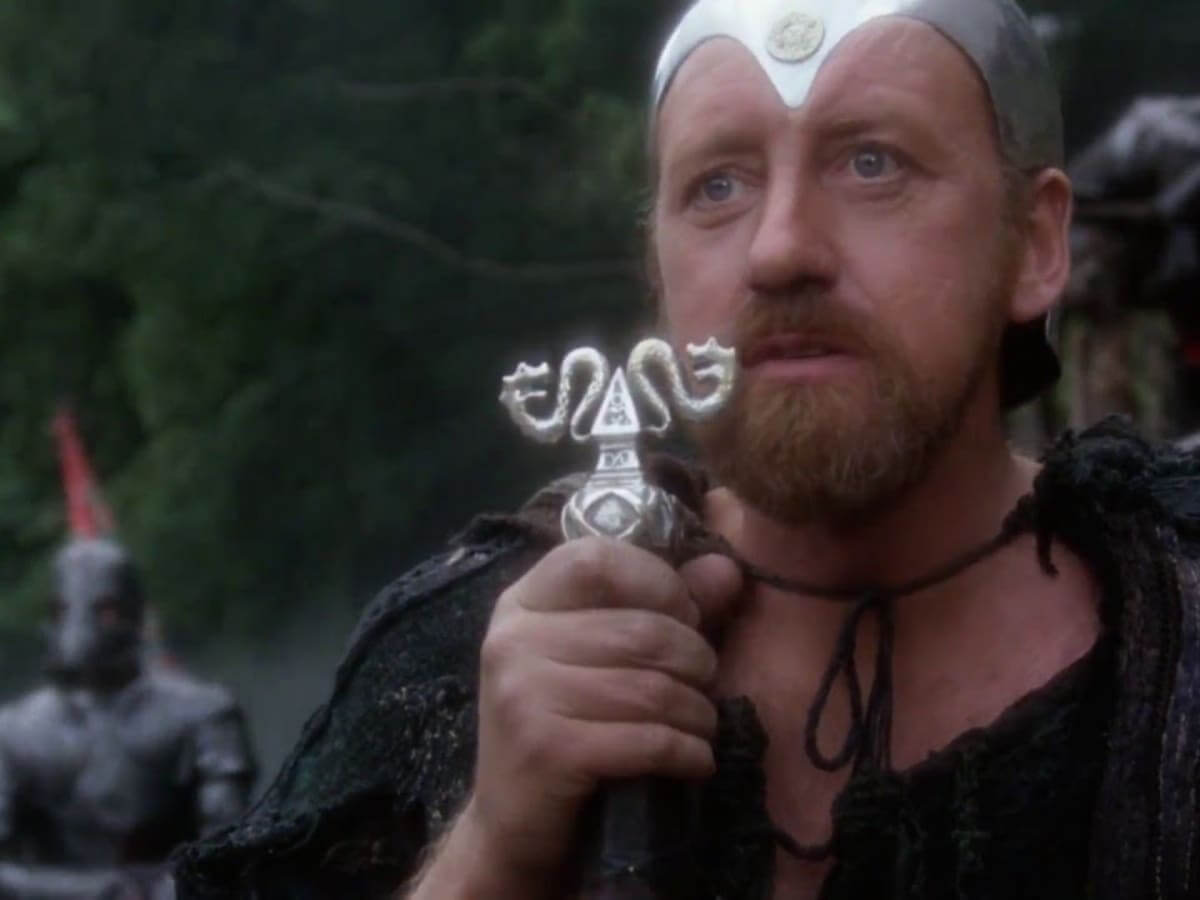
The Movie
Boorman based his endeavor on a relatively modest budget. Here, the viewer won’t experience a gut-punch from special effects, and the grandeur and stylistic perfection won’t leave them awestruck. In the era of the monumental Lord of the Rings and MCU, this film might seem like a mere peasant, only dreaming of royal insignia. Thankfully, money isn’t the sole indicator of a film’s worth. The absence of commercial attributes is compensated by the meticulous portrayal of medieval realities, and, most beautifully, capturing the spirit and fantasy magic within dreamlike landscapes and vistas. An ethereal atmosphere of wonder hovers over lakes, orchards, and landscapes, nature sprinkled with magic pulses with vivid colors and purity. Everything is bathed in the mystical mist reminiscent of Celtic legends.
The medieval bastions and equipment certainly don’t match the generated worlds and intricate props of DCU, born from massive budgets, but they compensate for it with their fidelity to medieval customs and behaviors. We can observe a knightly tournament, admire the colorful jousting with lances, only to revel in the skirmish for the honor of the chosen lady moments later. The knights move in their armors as if they truly weighed astronomical kilograms, lances shatter like mad, and Lancelot’s silhouette evokes the sincerest chivalric ethos. We can witness a royal feast at Camelot, the knighting of Percival, or a very realistic siege of a castle belonging to Arthur’s vassal. The film is steeped in the medieval era; its purely earthly layer of world-building is imbued with the spirit of knightly epic and history. The second layer, the magical world, is already legend, myth, Celtic spirit, and above all, an exceedingly showcased nature.
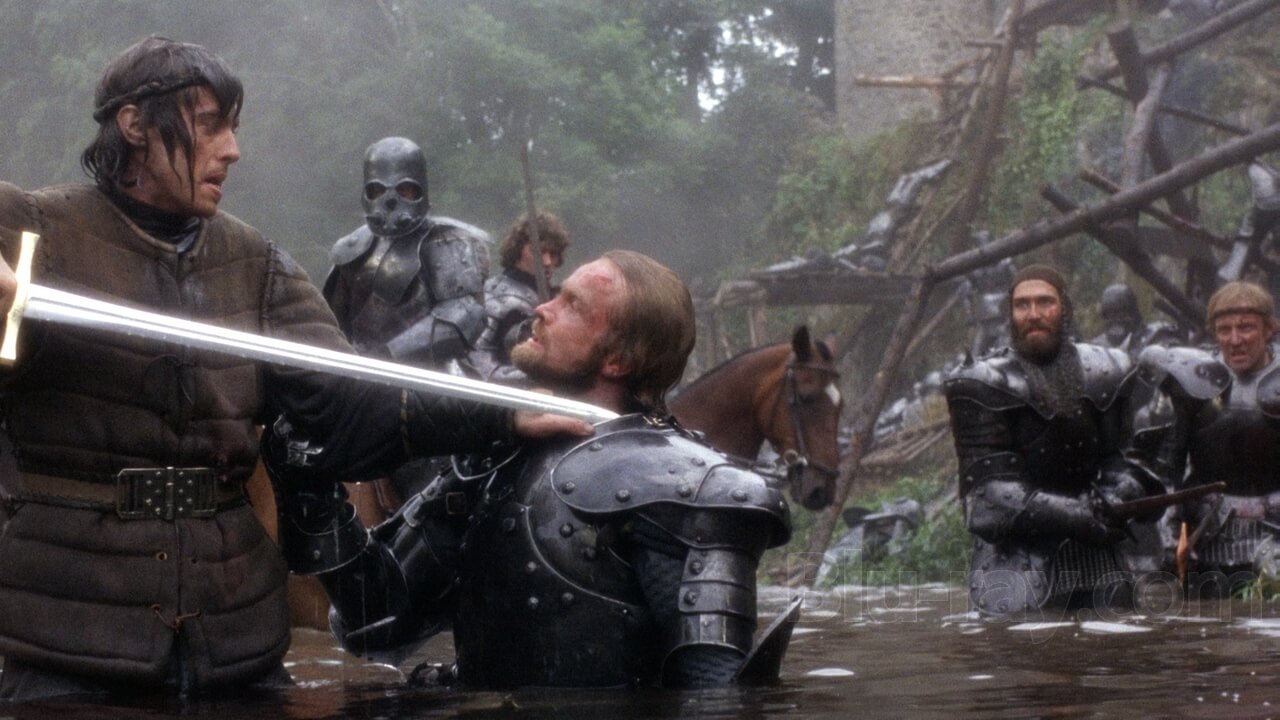
The modesty of Excalibur can also be found in its cast. I don’t know whether this is due to the budget’s constraints or a deliberate intention, but the fact remains that relatively unknown (or completely unknown) actors are one of the film’s main strengths. The characters are anonymous, vividly drawn (one might even say magical), allowing the focus to remain on the narrative and imagery, enriched by their discreet, sometimes even theatrical acting. Nigel Terry, who plays Arthur, undergoes successive transformations as a youth, warrior, and king, and he truly excels in these roles. In the silent yet emotion-torn characters of Lancelot and Guinevere, we find only noble and genuine qualities. Lancelot is a true knight, while Guinevere follows the voice of her heart. Nicol Williamson as Merlin adds a touch of impeccable humor to his enchantment, with a unique distance and personality that strengthen his distinctiveness. Even the episodes are enjoyable, especially the elevated performance of Gabriel Byrne as Uther, who sows vibrant violence, destruction, and audacity in the film’s epilogue. One of the best fantasy films in the history of cinema, it was recognized both in Europe and across the ocean. In the year of our Lord 1981, it was crowned with the Golden Palm in Cannes and received five Academy Award nominations afterward. Not bad for a rather unspectacular fantasy film.
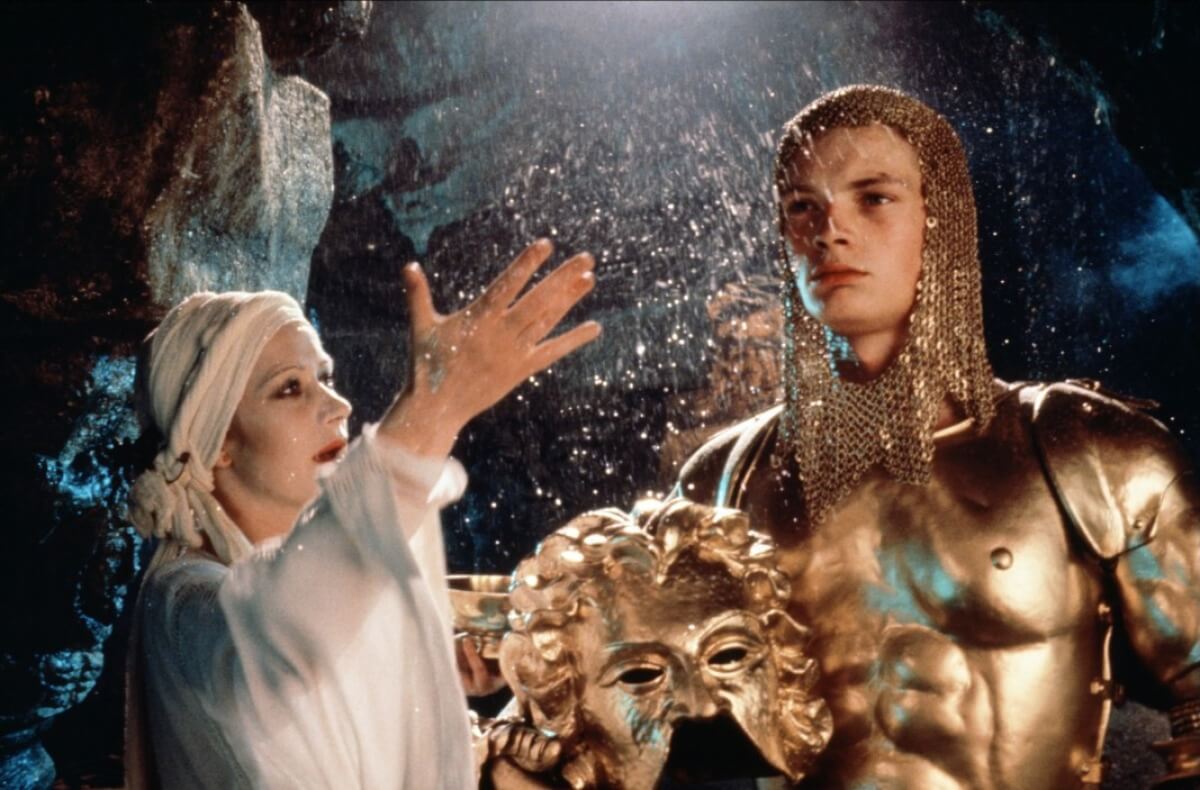
Holy Grail
The Holy Grail. Unlike Excalibur, this artifact symbolizes Christianity, reflecting the religious aspect. Its existence is owed to Christian mythology; it is the Cup from the Last Supper and the Chalice that Joseph of Arimathea used to collect the blood of Christ. The common denominator between Arthur and Christ is their people and sacrifice, through which salvation is possible. Arthur drinks from the Cup of Bitterness, his destiny, his martyr’s blood. He, too, is marked by the future and destiny, which he will find on the fields of Camlann in the final battle against the forces of darkness. It’s there that his son will strike him with a spear, where Excalibur will return from where it came, and it’s there that his “ascension” to the island of Avalon will take place.
The associations come naturally, as from the moment of placing Excalibur into the lake, we can designate the birth of Christianity, which ultimately supersedes magic from the world of humans. Arthur’s parents are not his true parents, and he comes into the world as the Chosen One, meant to bring peace and rebirth. These are loose symbolic frames that incline towards the theory that Christ is the loyal prototype of Arthur, an analogous image ingrained in the symbolism of the legend. However, this doesn’t fully add up. Undoubtedly, the history of Christianity is integrated into the legend as a force that will save the country and its people from evil, sin, materialized in the despicable form of Mordred. The Holy Grail also brings purification from sin, primarily the sin of Lancelot and Guinevere. These two I would be inclined to liken to Adam and Eve and their original sin; from that moment, sin is born, which ruins the country. The forbidden fruit is love contrary to chivalrous honor and truth, against marital oath. Paradise is lost, and the heroes are condemned to exile.

Let’s return to the knight Percival and the Grail, which he finds. On the path of sacrifice, martyrdom, and doubt, Percival finally manages to find the chalice. However, first comes baptism, a cleansing from the rusted armor of sin in the river that leads to the chamber. I’ll remind you that it’s precisely the sin of Lancelot and Guinevere that’s the main cause of the king’s apathy and the slow agony. The Holy Grail (faith, Christianity) thus becomes an antidote to sin and the symbolic fall of the land. The king and the country are one. But who is Arthur? As he himself confesses, after drinking from the Chalice, he lived in others and through others. Lancelot was his honor, Guinevere his guilt, the knights his deeds, Mordred his sin. Arthur’s body is filled by all these characters, fulfilling what was meant to be. Arthur is merely an earthly ruler, limited, who must prioritize power and country over love.
His knights are martyrs and sacrifices, embarking on the dramatic mission of the Holy Grail. The perfect knight, with his beauty and honor, is Lancelot. Arthur himself is a doubting man, a learner, one who makes mistakes but understands them, destined for his role. However, the time comes when he must become the true King, embodied in one person—his knights fulfill the “mission of sacrifice.” He reconciles and forgives Guinevere, fights alongside Lancelot, and slays the sin embodied in Mordred on the fields of Camlann. Unity is restored; harmony emerges in the relationships between the heroes. A New King is born, once consumed by his weakness, who now finds unity with the country. The Christ-like aspect is a response to magic (paganism?), loosely incorporated into the figure of Arthur, manifesting as a new way to view the world, a new path to happiness and truth. The unification of the King and the Country takes place on the plane of faith.
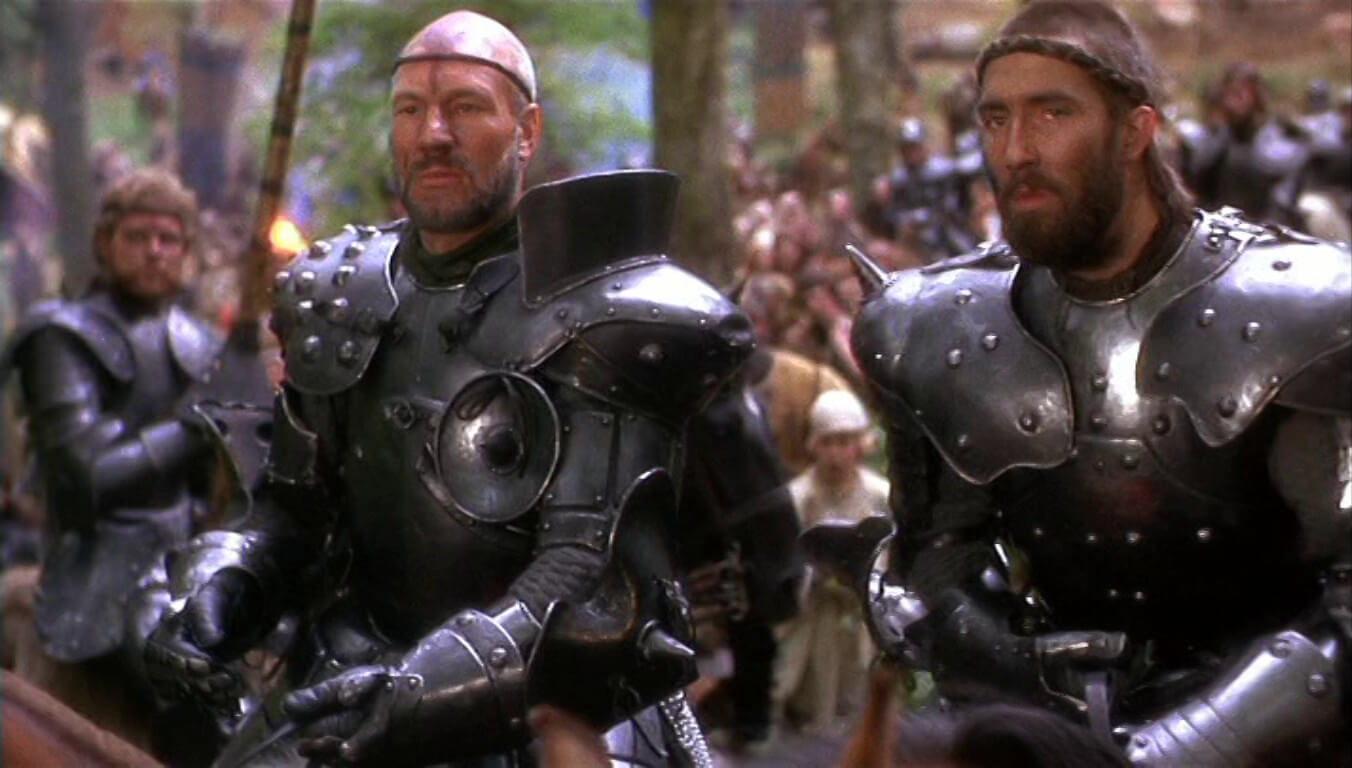
Excalibur is somewhat nostalgic. Here we have the collision of two worlds: the magical world of Excalibur and the Christian world of the Holy Grail.
The latter supersedes magic and seems to be a better solution. It’s a film about birth and twilight, and that’s why the entire story is portrayed through the changing seasons, consuming and giving life. Merlin is a significant character, appearing to be the King of the Magical World. It’s the twilight of the era of ancient gods and the time of one God, the twilight of Merlin, who simply vanishes, and the time of Arthur’s successors, into whose hands destiny will be placed. Isn’t this film a search for God? The Knights of the Round Table are disciples, angels who will eradicate sin from the world of men. However, there’s something beautiful in this film, something beyond the sacred layer that shapes its face. It’s magic, which isn’t treated as paganism and darkness. The world of magic is equal to the New World, but it’s in decline, living by its own rules. It’s portrayed as the Power of Nature reigning over the world of humans. Nature is the Dragon, the Dragon is everything, manifesting itself in the force of nature, in Excalibur, in Merlin. When people, consumed by eternal conflict, no longer need magic, it disappears; when sin and decline appear, nature dies. A new force is needed to resurrect the ancient order.
Knight and Love

Magic manifests itself in nature, and nature is the condition of the land. Seasons, day and night, leaves, flowers, and ruins, the sun – they create a symbolic, visual image of the world. When the world is engulfed in the dark ages, war, and Uther Pendragon’s bloody politics, fire dominates, night is shrouded in the mists of eternal struggle, disrupting the order and causing the death of nature. With the hope placed in Excalibur wielded by the new King, a vibrant and green spring arrives. The land flourishes joyfully and rises from the Winter that devastated nature. Summer is the period of the realm’s glory, autumn is its decline, culminating in the final battle in the misty crimson rays of the setting sun. Magic also pulses in the green radiance that bathes the entire country with the era of Excalibur’s reign.
Another aspect that shapes the world of magic and its condition is the opposing steel, the knight’s armor, in relation to nature. Black armor represents murder and aggression, silver armor represents splendor and rebirth, rusted and dull armor signifies sin, bloodstained armor symbolizes twilight and death. The answer to human interference in the world of magic is hidden in steel. Armor is mirrors reflecting the souls of the knights. This is why Lancelot fights with himself in a dreamlike duel. He is innocent, but not in his heart. He battles his inner self, naked, against the armor, which is a reflection of his heart. It is pure, shining, silver, because it represents faith, love, purity, and the honor of the truest of knights. However, sinful love triumphs against ideals, against chivalry. A wound remains that will never heal, eternal pain, shame, sin, which will only be forgiven on his deathbed.

The love between Guinevere and Lancelot is truly tragic. However, Arthur also bears some responsibility as he prioritized his kingdom and power over his love for Guinevere. Lancelot himself is the ideal knight, upholding the medieval code of honor, unwavering, and the most skilled warrior, a loyal servant and a faithful friend. Love becomes his curse and tragedy. He must choose between his loyalty to the king and the ideals of chivalry and his love for Guinevere. Every choice is tragic and condemns him to damnation. In a symbolic duel, love prevails, the tragedy is complete, and sin is born.
Excalibur
However, the most crucial element is Excalibur. It is where it begins and where it ends. The legend and the era of magic’s reign. In the hands of a rightful and worthy ruler, Excalibur is a unifying artifact for the divided kingdom. Excalibur brings peace and the bounty of nature, ensuring prosperity for the people. It awakens hope and represents the pristine purity of the world, an act of creation, the act of building a just and prosperous realm. In this weapon, the history of a wise and noble ruler is concealed. It is the element that shapes history, indicates destiny, and is destiny itself, truth. The legend of Arthur rises on the blade of Excalibur, the ruler of the magical and fantastical realm, using magic to shape a new world.
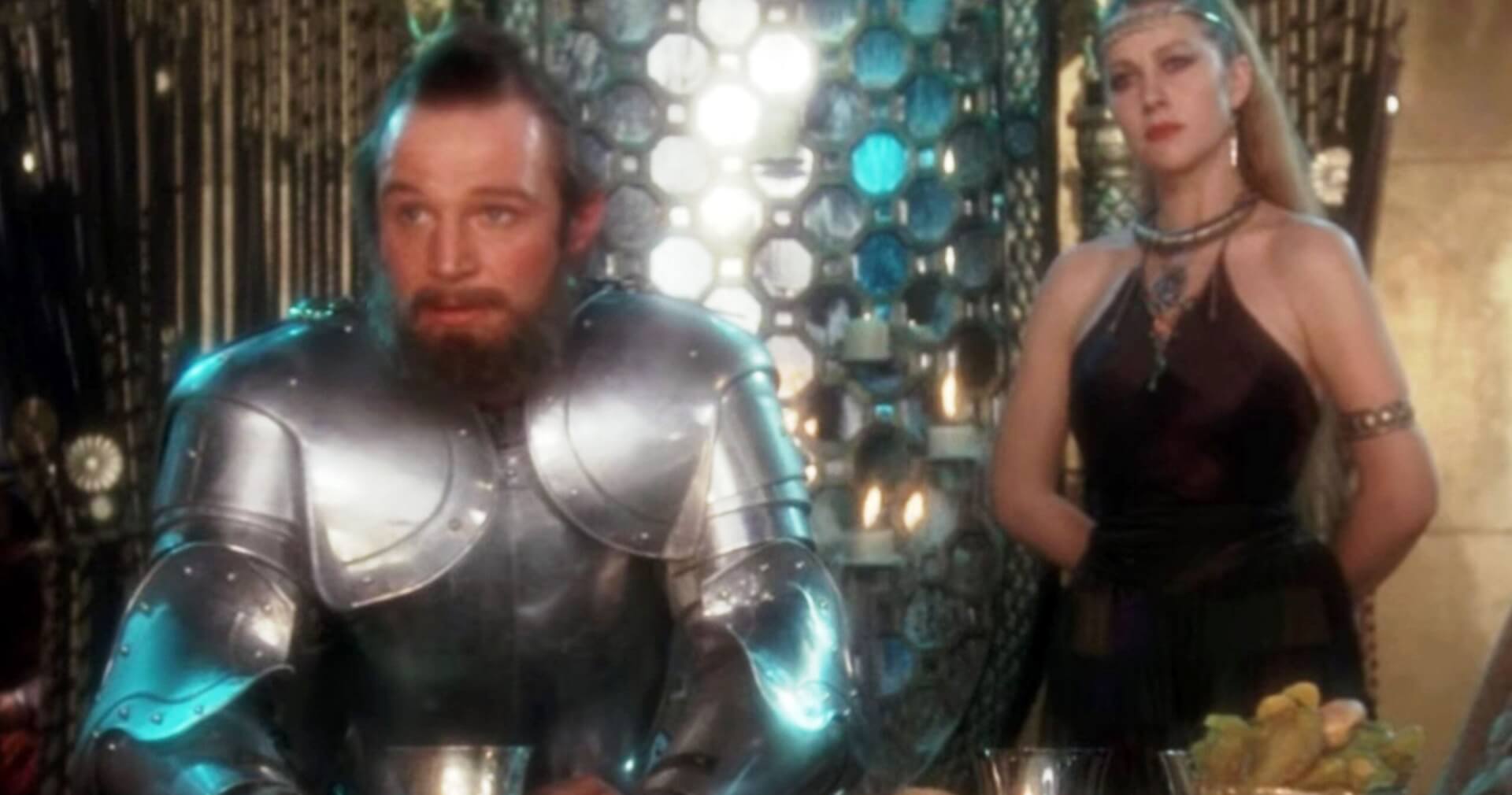
His tools of creation are the virtues he embodies. He molds the world, and Excalibur shows the right path, the path of ethics, justice, and honor. Such is the world of fantasy, undoubtedly a form of utopia. An ideal order emerges, and a perfect society takes shape. Everyone is equal at the Round Table, living in happiness and abundance, free from worries and harm. In honor of those times, they build a castle of gold and silver – Camelot. This is the beauty of the film, a magical, utopian world, a world as nature itself – Excalibur. Yet, soon, a new world comes to life, the world we are destined to live in.
Sin awakens, a new battle begins, one that persists. We step onto the path of religion, faith, new notions of love, new experiences, and the tragedy of the soul. That old world fades away, Excalibur returns to the Lady of the Lake, the Dragon drifts away with the mist, Merlin vanishes. That perfect, magical realm vanishes along with them, and we are left – humans, with our sin, our path, our struggles, and our love. But it’s not the same anymore, it’s not perfect. There is no peace, justice, unity in this world, no Excalibur. The path to the Holy Grail remains arduous, full of sacrifice. This is where my unwavering nostalgia lies. And my love for fantasy.

